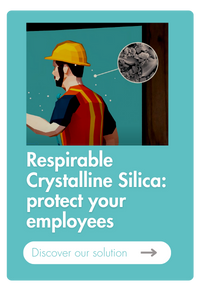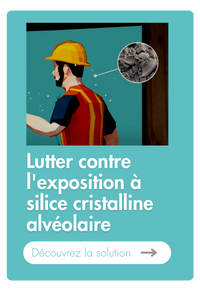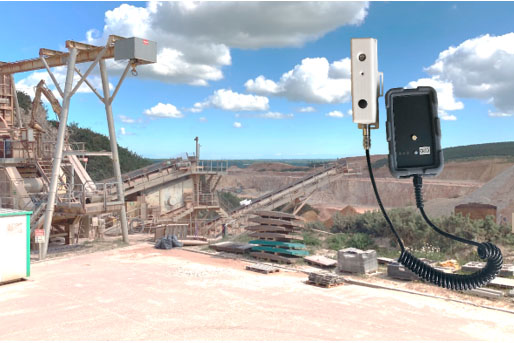Respirable crystalline silica: Risks and Regulations
Summary
What is respirable crystalline silica?
Crystalline silica is one of the forms of Silica (silicon dioxide -SiO2) found in natural minerals, most notably quartz, cristobalite and tridymite.
In its natural state, quartz is present in various rocks: sandstone, granite, sand, etc. used in several industries such as construction (e.g. in its form of concrete, mortar, façade rendering). Its industrial use significantly increases its risk to human health. – Source INRS (french)
The respirable fraction of crystalline silica is the finest particles of silica dust, under 4µm in diameter. Due to its size, it can reach the pulmonary alveoli, which increases its impact in the development of serious breathing diseases.
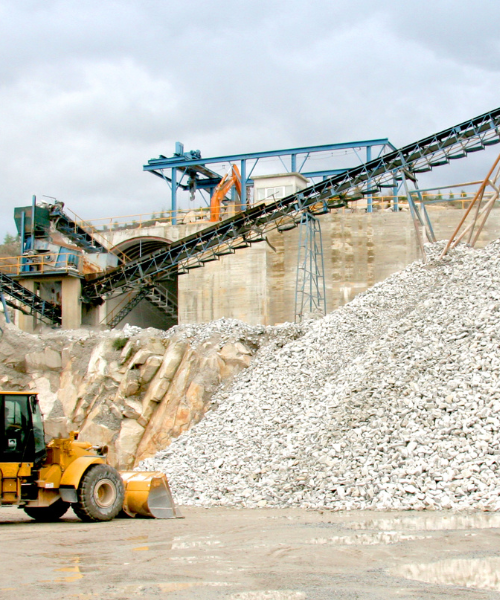
What are the health risks?
Recognised as a human carcinogen since 1997 by the IARC, crystalline silica is a factor in the development of silicosis and bronchopulmonary cancer. ANSES studies also demonstrate the impact of this exposure in the development of other diseases such as systemic scleroderma, systemic lupus erythematosus and rheumatoid arthritis.
The French National Authority for Health has also published a recommendation of good practice for occupational physicians, the multidisciplinary occupational health team and treating physicians or pulmonologists. The aim of this report is to raise awareness of the screening of certain pathologies for workers exposed to crystalline silica.
Link towards the recommendation overview – [FR]
- Article ANSES – [FR]
- Collective expertise report [FR]– Avis ANSES « Dangers, expositions et risques relatifs à la silice cristalline » – 2019, april
What does the regulation say?
“There is ample evidence that respirable crystalline silica dust is carcinogenic. […] It is therefore appropriate to include work involving exposure to respirable crystalline silica dust from work processes in Annex I to Directive 2004/37/EC and to establish a limit value for respirable crystalline silica dust.”
What are the legal consequences for companies?
This exposure threshold for silica dust is 0.1 mg/m3 for quartz silica and 0.05 mg/m³ for cristobalite and tridymite silica.
This threshold definition is a reference framework for the implementation of appropriate protective devices.
Identify crystalline silica for better protection
👉 levels of RCS on your operations in real time
👉 alerts in case of peak exposure
👉 cumulative exposure level during the workday (alerts when approaching legal limits – OEL, WEL)
- Evaluate the risks in terms of nature, degree and duration of exposure – an evaluation that should be repeated regularly. The results of this assessment are recorded in a unique risk assessment document. The fine for failing to update this document is €1,500 (Article R4741)
- Put in place preventive measures and means. When the replacement of this agent is not feasible for the activity, the following is a non-exhaustive list of alternatives:
- Limit the volume of use and the number of people exposed
- Evacuate the particles by humidification, water sprinkling and/or ventilating processes
- Early detection of abnormal exposures using appropriate tools / methods
- Implement collective and/or individual protection measures, hygiene standards
- Raise awareness, train workers on health risks
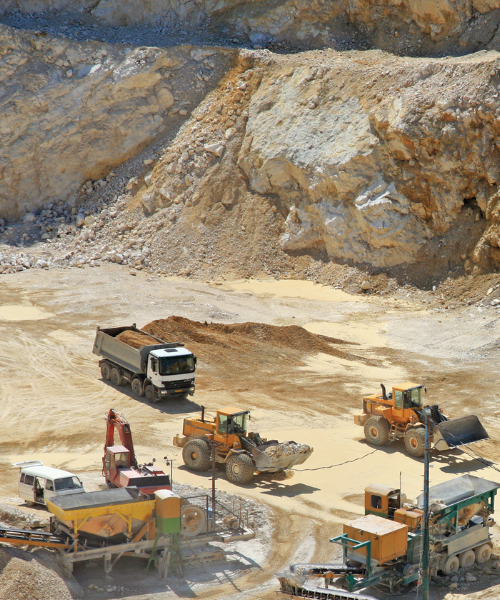
The INRS, a general occupational health and safety organisation, has carried out studies on the subject and in one of its files develops concrete measures to minimise the impact of these particles on workers’ health. In the main preventive measures put forward, this article recommends “equipping workstations with a dust collection device at the source (device integrated into the process or tooling) when operations cannot be carried out in a closed system;” or “regularly checking the dust in the working atmosphere and at each major change in operating methods.
What are the penalties for non-compliance with the legal obligations defined by the Labour Code?
What you need to remember from this article:
- In terms of civil sanctions: if the employee is put in danger (and if there has been no accident), the latter can take the matter to the Prud’hommes and claim damages.
- In terms of criminal and/or administrative sanctions: If the company has not put in place appropriate measures having identified a danger for its employee, this marks a breach of its safety obligation and may therefore be subject to administrative sanctions but also to a criminal conviction.

